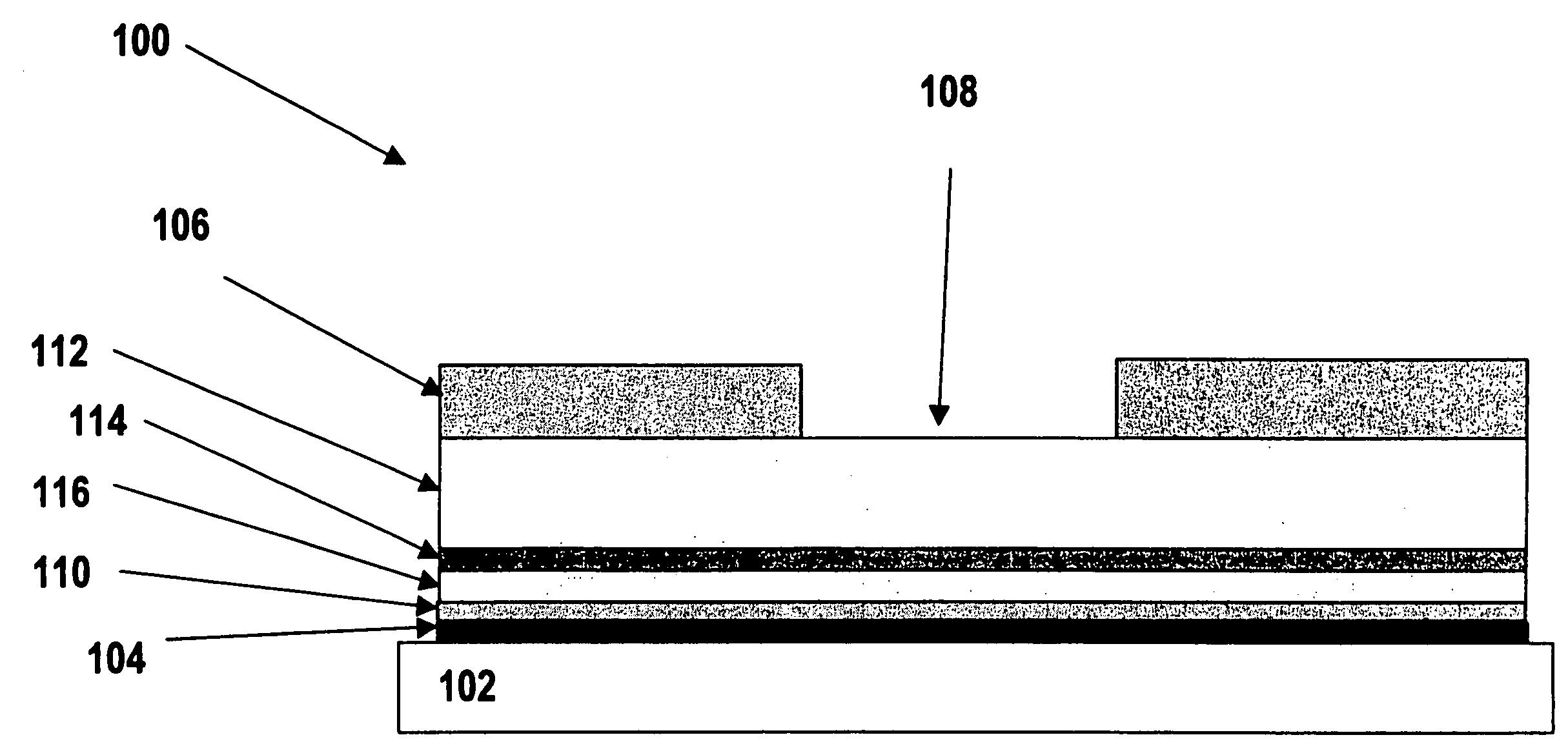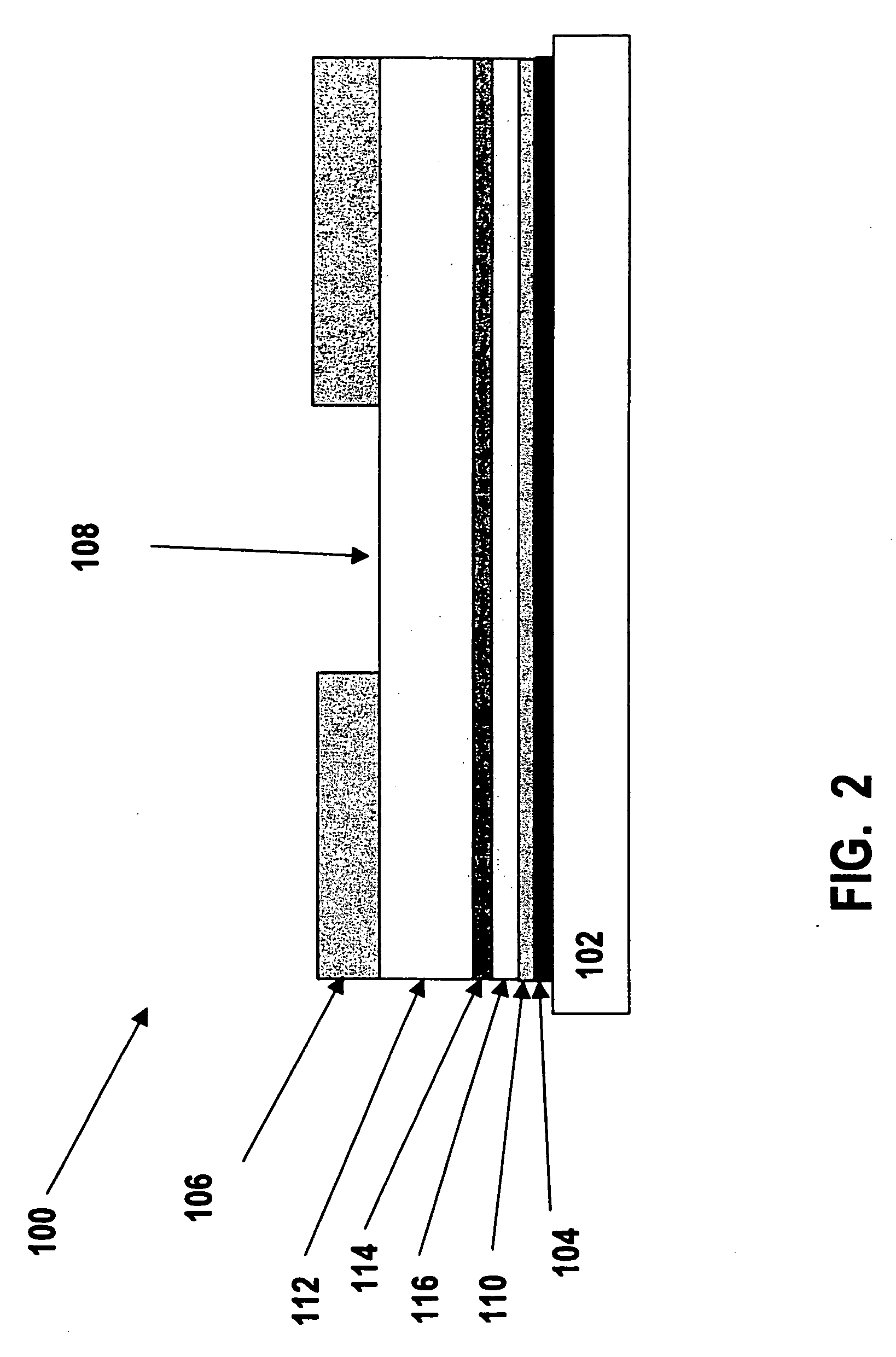Analyte sensors and methods for making and using them
an analyte sensor and sensor technology, applied in the field of analyte sensors, can solve the problems of low oxygen concentration in human body compared with glucose concentration, useless to directly use it as a glucose sensor membrane, etc., and achieve the effects of good mechanical properties, high oxygen permeability, and controllable glucose permeability
- Summary
- Abstract
- Description
- Claims
- Application Information
AI Technical Summary
Benefits of technology
Problems solved by technology
Method used
Image
Examples
example 1
Synthesis of Silicone-Based Comb-Copolymer
[0164]9.6 g polydimethyl siloxane monomethacrylate (Mw=1000), 4.08 g methoxy poly(ethylene oxide)monomethacrylate (Mw=1000), 10.32 g methyl methacrylate, 50 mg 2,2′-azobisisobutyronitrile and 60 ml ethoxy ethyl acetate were added into a 200 mL round bottom flask containing a magnetic stirring bar. All chemicals were mixed together by Stirring for 20 min.
[0165]Made two-time freeze—vacuum—thaw-nitrogen for mixture to remove all oxygen in the round bottle flask.
[0166]The flask was placed into one oil bath. The solution was then heated to 75° C. After 16-24 h, the bottle was removed from the oil batch and allowed to cool down to room temperature.
[0167]The polymer solution was precipitated into 1000 ml of DI water and filtered out, then dissolved in 100 ml of THF again, and precipitated into 1000 ml H2O.
[0168]The solid polymer was filtered out and dried at 70° C. until constant weight.
example 2
Synthesis of Silicone-Based Comb-Copolymer
[0169]7.2 g polydimethyl siloxane monomethacrylate (Mw=1000), 7.2 g vinyl pyrolidone, 9.6 g methyl methacrylate, 50 mg 2,2′-azobisisobutyronitrile and 60 ml THF were added into a 200 mL round bottom flask containing a magnetic stirring bar. All chemical were mixed together by Stirring for 20 min.
[0170]Made two-time freeze—vacuum—thaw-nitrogen for mixture to remove all oxygen in the round bottle flask.
[0171]The flask was placed into one oil bath. The solution was then heated to 75° C. After 16-24 h, the bottle was removed from the oil batch and allowed to cool down to room temperature.
[0172]The polymer solution was precipitated into 1000 ml of DI water, dissolved in 100 ml of THF again and precipitated into 1000 ml H2O.
[0173]The solid polymer was filtered out and dried at 70° C. until constant weight.
[0174]More representative silicone based comb-copolymers prepared by the above procedure are listed in Table 1.
example 3
Charaterization of Silicone-Based Comb-Copolymers
[0175]a). Molecular weights of comb-copolymers were determined by Gel Permeation Chromatography (Waters, Inc) using THF / acetic acid (95:5 v / v) as mobile phase. Monodisperse Polystyrene standards were used for calibration. All data are showed in Table 2.
[0176]b). Infrared spectra of comb-copolymers were obtained using Nicolet Nexus 670 FT-IR. FIG. 7 shows the spectrum of sample # 5 listed in Table 1, exhibiting the expected absorbance band (cm−1).
[0177]c). Water uptake was determined gravimetrically at room temperature on films which were less then 0.5 mm thick. After evaporation of casting solvent, films were dried to constant weight at 50°C. in vacuum oven, weighted, immersed in deionzed water for 24 h, removed and blotted with filter paper, and weighted. Percent water uptake was determined from the formula:
% uptake=[(Ww−Wd) / Wd]×100
[0178]Where Ww is the weight of the swollen film and Wd is the weight of the dry film. The results are ...
PUM
| Property | Measurement | Unit |
|---|---|---|
| glucose diffusion coefficient | aaaaa | aaaaa |
| diffusion coefficient | aaaaa | aaaaa |
| thick | aaaaa | aaaaa |
Abstract
Description
Claims
Application Information
 Login to View More
Login to View More - R&D
- Intellectual Property
- Life Sciences
- Materials
- Tech Scout
- Unparalleled Data Quality
- Higher Quality Content
- 60% Fewer Hallucinations
Browse by: Latest US Patents, China's latest patents, Technical Efficacy Thesaurus, Application Domain, Technology Topic, Popular Technical Reports.
© 2025 PatSnap. All rights reserved.Legal|Privacy policy|Modern Slavery Act Transparency Statement|Sitemap|About US| Contact US: help@patsnap.com



